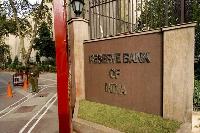
The RBI has designed a very systematic liquidity framework for the banking system. Under this liquidity framework, the central bank has arranged different facilities to provide immediate funds or liquidity to banks. Similarly, if there is surplus cash in the banking system, it will be absorbed by the RBI through a set of facilities.
The overall objective of the liquidity framework is that banking system should not face any systemic liquidity crisis. Similarly, it should not be made unstable with excess liquidity (or cash).
Most popular liquidity facilities of the RBI are the overnight repo and overnight reverse repo (which are usually referred as repo and reverse repo) available for commercial banks to adjust with their daily liquidity needs. Here, if a bank need funds, it can get them by using the repo window. Similarly, if the bank has excess, it can park that fund with the RBI using the reverse repo window. Both repo and reverse repo are overnight or is available for just one day.
Meaning of term repo
A term repo is a repo of more than one-day duration. The word term denotes longer period. Hence it is a way for banks to avail money from the RBI for more than one-day duration. As in the case of repo, the loan seeking bank should submit securities to the RBI. Since the loan is for more duration, the bank should give higher interest than the repo rate.
Under the RBI’s new restructured liquidity framework, the term repo is named as Variable Rate Term Repo. It is called variable rate repo because the interest rate is varied depending upon the auction rate.
In India, the term repo has different durations. The usual durations are 7 days, 14 days and 28 days. Overall, the objective of term repo is to ensure liquidity in the banking system.
The utility of term repo
If banks need funds for relatively more duration, like three day, seven day etc., the RBI will announce a term repo auction by intimating a total amount.
But term repo is very different from of repo in its functioning. Firstly, repo is available from Monday to Friday. But in the case of term repo, the facility is available for commercial banks only when the RBI notifies it, and it is usually available twice in a week.
Profile of term repo:
|
Name of the Liquidity Facility |
Features: Quantity and rate |
Timing/Periodicity |
|
Variable rate Term Repo Auction |
0.75% of the system wide NDTL, Auction for a fixed amount (say Rs 5000 crores)), interest rate through auction, bids at or below repo rate will be rejected |
Twice in a week; (can be changed) |
What will be the amount of funds given under term repo?
In the case of term repo, a bank should participate in an auction to get money. Here, the total auction amount provided by the RBI for the entire banking system will be notified previously (like Rs 5000 crores etc).
What will be the interest rate?
Regarding interest rate under term repo, it is determined through the auction. A cut off rate above the repo rate is set for the auction. This means that banks can’t offer lower interest rate than this minimum/repo rate.
When term repo is declared?
Whenever the RBI assess that there is the need for funds for three to 28 days for the banking system, it notifies the term repo auction. Similarly, the central bank also announces the amount it would like to provide to the banks in total. The auction amount will be within 0.75 %of the total deposit in the banking system.
*********









